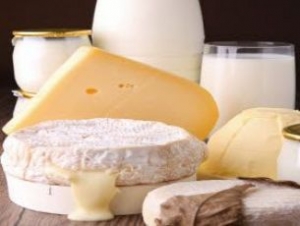Dairy in the World
Australian Dairy Industry Calls for More Transparency

In the last few years, the industry has been embroiled in pricing dips which have captured national attention and come under heavy criticism.
"Farmers can feel powerless against the big companies but this is our chance to raise our concerns," New South Wales Dairy Association Chair Erika Chesworth said in a statement.
Dairy farmers' problems started in 2011 when Australias two largest supermarkets, Woolworths and Coles, began a price war which would see the cost of milk fall to one Australian dollar (0.76 cents US dollar) per liter for the chains-in-store brands.
Despite initially being very popular with consumers and a win for both supermarkets, farmers concerns started to get picked up by national media outlets, causing a backlash that encouraged shoppers to boycott cheaper in-store brands and purchase more expensive alternatives in order to help farmers.
The boycott did gain ground and the number of independent milk label purchases swiftly rose, however most in the industry believe it effected little change.
Consumers were paying an extra 90 per cent per liter with but processors had not committed to pass the extra profits on to farmers,Consumer group, Choice head of media Tom Godfrey told the Australian Broadcasting Corporation.
"While it's OK if processors are getting more money, a lot of consumers are paying more for milk under the belief that by buying branded milk the farmers are going to get more."
Early in 2016 the country's biggest dairy processors, Murray Goulburn and New Zealand-based Fonterra announced they would slash the price of milk solids from around A$6 (4.60 US dollars) per kg to A$4.70 (3.60 US dollars).
Many blamed the dramatic cut on Woolworths and Coles, however these domestic economic issues were only partially to blame.
Each year processors set an opening price and a higher annual average forecast throughout the year, Choice finance journalist Daniel Graham said.
They increase the price in step-ups until they reach the forecast, but last year this didn't happen, so farmers are actually having to pay back money they had already been paid.
The reason why the industry did not reach its annual forecast was due to global, geopolitical events following European sanctions being placed on Russia after the region of Crimea was annexed from the Ukraine.
In retaliation, the Russian government ceased all European imports and this meant bad news for Australia's dairy industry because the Russians were Europes biggest buyers of milk products.
With no one to sell to, Europes dairy producers began looking to Asia, effectively cutting in on Australias marketplace.
At the same time China's taste for imported dairy started to decline and their imports dropped off including the demand for Australian milk powder, one of our biggest dairy exports, so prices for milk powder plummeted making the cash cow for the industry run dry, Mr Graham said.
Murray Goulburn and Fonterra either failed to see the signs of a worsening global market or they just ignored them.
The New South Wales Dairy Association will attempt to inform the national regulator that there needs to be more power in the hands of farmers, who feel they are held hostage to industry structures.
Even measures that are supposed to even out the playing field, like collective bargaining groups, need to be critically analyzed and improved, Ms Chesworth said.
TheCattleSite News Desk























